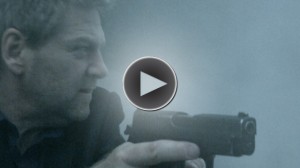This post aims to be a bit of a follow up to the Stick vs Carrot post I wrote a long while ago about why I don’t work for free. It presumes you are not wanting something for nothing, so if you are, or have little budget, I strongly encourage you to read Stick vs Carrot first. This post is aimed at exactly the same people, ie small industries, students/graduates wanting help with their videos, musicians wanting music video help. It is also for those who have never hired someone before to do VFX or consider all VFX to involve a green screen.
Regularly I’ll get emails saying something like, “I’ve just completed my first album and am looking to hire a VFX guy for help with my first music video. How much will it cost to add VFX to my dancers?”
Your question opens up a veritable Pandora’s Box of new questions. Much more information is needed.
In an ideal world, before you start a thing, even putting pen to paper to create a storyboard (you are creating a storyboard right?), plan out shooting, chat to VFX companies about what can and can’t be done. There are many quick, cheap solutions, but you may find some of your plans are way too adventurous. When filming with VFX in mind, rather than applying a fix-it-in-post attitude, a few pitfalls can be avoided, but also planned for. For example, many VFX are so-called invisible VFX. They don’t go bang, they don’t melt buildings into a raging torrent of water, they just sit in the background and hide things that may draw attention to themselves. Sometimes they’re even in the foreground. Period dramas are an excellent example of this. In Britain, we are lucky enough to still have many beautiful regency houses in fantastic condition, but they are often bordered by various modern paraphernalia such as electrical cables, gift shops, a nearby oilseed rape farm, a satellite dish, a Starbucks. All of this needs removing so it doesn’t feel incongruous with the regency feel of the drama. These invisible effects appear in many types of show or promo. On a small budget video they may also be invisible costs you haven’t considered. Look out for them.
When contacting VFX companies, (or especially in an effort to save cash, individual artists), check your budget. Really now, check it. If it’s really low, only a few thousand, consider how essential your chosen VFX really are. Junk things you’ve added because you saw it in The Hobbit and think it might be cool in your shaver advert. Don’t be offended if individuals like myself tell you to go away and save some cash. Add an extra contingency of about 40% on top if you can. Why? Things change. All the time. We’re all human and you may find that you don’t like the results, even if they do look thoroughly convincing. All VFX houses can provide quotes for you to assist roughly with your budgeting.
Make a storyboard. Even if it’s really rough sketches. There are guides to it online, but quick pointers are the following; an image for each shot, large arrows showing camera movement, VFX motion and direction. The more detail the better. It may seem time-consuming, but overall it will save you time and money. When chatting about VFX, refer to the boards, to scripts, to reference images, heck even full-on style guides and treatments are great. Knowing the camera you will shoot on is advantageous.
Even after all of this, there will be to-ing and fro-ing. This is natural as oddly enough it’s a creative process, but with some forward planning you’ll become a respected creative rather than one who inspires groaning upon entering a room. Take your time, plan ahead, ideally chat to VFX types before production, shoot only what you planned to, don’t move the goal posts and you’ll hit the end with minimal compromises.
